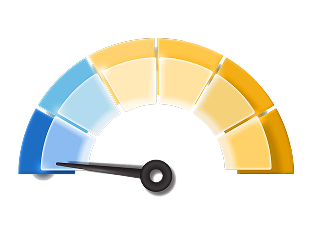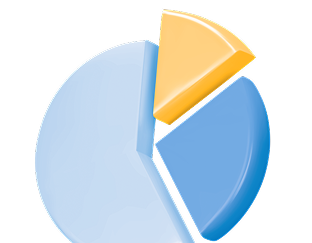Disclaimer The calculator alone is not sufficient and shouldn't be used for the development or implementation of an investment strategy. This tool is created to explain basic financial / investment related concepts to investors. The tool is created for helping the investor take an informed investment decision and is not an investment process in itself. Bajaj Finserv AMC has tied up with AdvisorKhoj for integrating the calculator to the website. Mutual Fund does not provide guaranteed returns. Also, there is no assurance about the accuracy of the calculator. Past performance may or may not be sustained in future, and the same may not provide a basis for comparison with other investments. Investors are advised to seek professional advice from financial, tax and legal advisor before investing in mutual funds.
Other Calculators
View AllEXPLORE OUR FUNDS
All Mutual Funds



















MORE ABOUT CALCULATORs
An income tax calculator is a tool that helps you estimate your tax liability. You can use an online income tax calculator to calculate the taxes you need to pay for a certain assessment year. Such tools help you understand the amount of tax you need to pay based on your income, investments and deductions. They may also help you identify which regime is more beneficial – the old tax regime or the new tax regime – and make more informed decisions.
An income tax calculator helps you estimate your tax payable by considering your income, deductions, exemptions, and chosen tax regime. It subtracts eligible deductions to determine your taxable income and applies the relevant tax slab to show your total tax liability.
Here are some tips calculate income tax using this income tax planner:
- Choose the tax regime that offers a lower tax liability.
- Utilise deductions under Section 80C, 80D, and 80G of the Income Tax Act, 1961, for tax savings (for those opting for old regime)
- Ensure accuracy by entering all sources of income.
Using an income tax calculator for FY 2024-25 is simple. Just follow these steps:
- Select the financial year: In this case, FY 2025-25.
- Enter your income: Input salary, rental income, capital gains, and any other earnings.
- Choose tax regime: Choose either the new tax regime or old tax regime.
- Add deductions: Include eligible deductions like 80C, 80D and HRA (only applicable to old regime of Income Tax Act, 1961).
- View tax computation: The tool calculates your net taxable income and tax payable.
Compare tax regimes: Analyse tax liability under both regimes to choose a suitable option.
By following these steps, taxpayers can make informed financial decisions and optimize tax savings.
While the calculator does the work instantly, understanding the process helps you stay informed. Steps to calculate income tax:
- Calculate gross income: Add salary, capital gains, rent, and other earnings.
- Apply exemptions: Deduct standard deduction and eligible exemptions. Under the new regime, only limited deductions apply (Sections 24b, 80CCD(2), and 80CCH).
- Find taxable income: Subtract exemptions from gross income.
- Apply tax slabs: Identify the applicable slab.
- Compute tax liability: Calculate total tax payable as per the chosen regime.
- Annual income including salary (minus HRA) and income from other sources: Rs. 10,00,000
- Deductions: Rs. 1,50,000 under Section 80C
- Standard deduction: Rs. 50,000
- Tax computation: Based on income tax slabs, the tax payable is Rs. 75,400 (with cess).
In this case, the new tax regime is beneficial for the individual. However, the computation can change if all the applicable deductions under the old tax regime are fully utilised.
- Annual income: Rs. 10,00,000
- Standard deduction: Rs. 75,000
- Taxable income: Rs. 9,25,000
- Tax computation: Based on income tax slabs, the tax payable is Rs. 44,200 (with cess).
Income tax in India is categorized into old and new tax regimes. Below is a comparison of income tax slabs in India:
| Old Tax Regime | New Tax Regime u/s 115BAC (AY 2026–27) | ||||
|---|---|---|---|---|---|
| Income Tax Slab | Income Tax Rate | Surcharge | Income Tax Slab | Income Tax Rate | Surcharge |
| Up to ₹2,50,000 | Nil | Nil | Up to ₹4,00,000 | Nil | Nil |
| ₹2,50,001 – ₹5,00,000** | 5% above ₹2,50,000 | Nil | ₹4,00,001 – ₹8,00,000** | 5% above ₹4,00,000 | Nil |
| ₹5,00,001 – ₹10,00,000 | ₹12,500 + 20% above ₹5,00,000 | Nil | ₹8,00,001 – ₹12,00,000 | ₹20,000 + 10% above ₹8,00,000 | Nil |
| ₹10,00,001 – ₹50,00,000 | ₹1,12,500 + 30% above ₹10,00,000 | Nil | ₹12,00,001 – ₹16,00,000 | ₹60,000 + 15% above ₹12,00,000 | Nil |
| ₹50,00,001 – ₹100,00,000 | ₹1,12,500 + 30% above ₹10,00,000 | 10% | ₹16,00,001 – ₹20,00,000 | ₹1,20,000 + 20% above ₹16,00,000 | Nil |
| ₹100,00,001 – ₹200,00,000 | ₹1,12,500 + 30% above ₹10,00,000 | 15% | ₹20,00,001 – ₹24,00,000 | ₹2,00,000 + 25% above ₹20,00,000 | Nil |
| ₹200,00,001 – ₹500,00,000 | ₹1,12,500 + 30% above ₹10,00,000 | 25% | Above ₹24,00,000 | ₹3,00,000 + 30% above ₹24,00,000 | 25% |
| Above ₹500,00,000 | ₹1,12,500 + 30% above ₹10,00,000 | 37% | – | – | 37% |
Note:
- This table applies to individual taxpayers below 60 years of age.
- For AY 2026–27, tax slabs under the new regime have been revised to make incomes up to ₹4 lakh tax-free and lower rates applied across subsequent ranges.
- Different slabs and exemptions apply for senior citizens (60 years and above) and super senior citizens (80 years and above).
- Quick estimates: No need for manual computations—the income tax calculator gives instant results.
- Tax planning: It acts as an income tax planner, showing which regime is more beneficial.
- Easy comparison : Users can plan their investments to determine how to reduce taxes.
Calculating income tax for a salaried employee is easy with an online income tax calculator. By entering your salary, deductions, and exemptions (if any), you can quickly estimate your tax liability. Some tools also act as an income tax return calculator, helping you plan your finances and know the taxes payable before filing your ITR.
FaQ's
Certain incomes like agricultural income, gratuity (within limits), and public provident fund maturity amount including interest etc. are tax-free.
For individuals below 60 years, income up to ₹2.5 lakh is non-taxable under the old regime. Under the new regime (effective FY 2025–26 onwards), income up to ₹4 lakh is tax-free.
Anyone earning above the basic exemption limit must file an ITR. Here are the general eligibility criteria:
Income threshold:
Individuals below 60 years: Total income exceeds Rs. 2,50,000.
Senior citizens (60-80 years): Total income exceeds Rs. 3,00,000.
Super senior citizens (above 80 years): Total income exceeds Rs. 5,00,000.
There are certain other conditions and exemptions. For full details, consult a tax advisor.
Typically, ITR filing for individuals begins on April 1 and the due date is July 31 of the assessment year.
Exemptions reduce taxable income directly (e.g., HRA, LTA). • Deductions are amounts subtracted from income before tax is calculated (e.g., 80C, 80D under the old regime of the Income Tax Act, 1961).
- values: The range of cells that contains the cash flows.
- dates: The range of cells that contains the corresponding dates.
The Union Budget 2025 overhauled the tax slabs for the new regime of the Income Tax Act, 1961 and increased the rebate limit to Rs. 60,000. This effectively makes incomes of up to Rs. 12 lakh tax-free (after claiming rebate). You can read our detailed article about the 2025 Budget here.
Simply enter income and deductions and select the tax regime. The calculator will estimate your tax liability based on your inputs.
An income tax calculator is a tool that estimates your tax liability by applying relevant tax slabs, deductions, and exemptions.
An online income tax calculator applies the applicable rates for both old and new tax regimes to tell you which option is more suitable for your income.
You don’t need any documents to use the calculator, but you may keep your salary slips, Form 16, investment details and proofs of other income handy to input these details accurately.
An online tax calculator provides quick results, saving time and potentially minimizing errors compared to manual calculations, though final verification before filing ITR is recommended.






























